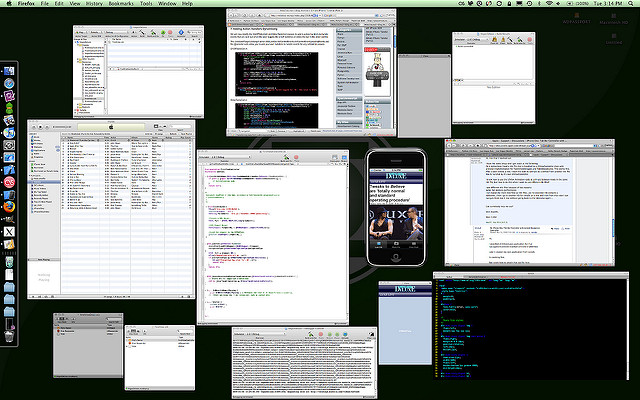We are still in the first quarter of 2016, and we saw an unprecedented growth in web development space last year. But, 2016 already looks very promising with web development taking the center stage with great upcoming frameworks, evolving technologies, and powerful development tools.
Let us take a look at what are the web development trends for 2016 and beyond.
9 Web Development Trends for 2016 and Beyond
-
Motion User Interface:
This Motion User Interface is a SaSS library, which is one among the three parts of the foundation for applications by Zurb. This Motion UI helps to create animations and CSS transitions at a faster pace. There will be fewer complications to make applications transitions be smooth and rich with a set of predefined motions. In fact, the way these animated elements integrate into websites, it makes Motion UI as one of the preferred libraries by developers around the world.
-
New Devices Mean New Responsive Designs:
There are many emerging technologies that are hitting the market and this means web development space is about to get a major makeover. Though many new technologies are taking their first step in 2016 but the development stage will be set for the coming years.
Today, responsive design is no longer restricted to just mobile only. There are a plethora of new devices that are bombarding the market that includes wearable gadgets (Apple watch), Google glass, and Oculus Rift are some of the most talked about technologies. With these technologies growing in popularity, the responsive designs have taken the center stage already.
-
Internet of Things (IoT) will take Center Stage:
The Internet of Things is about to shake everything up and take app development to a whole new level. According to a report from Technavio, the IoT will grow close to 32% between 2015 and 2019. Even Gartner has predicted that most of the IoT development will come from the startup entities that are in business for less than three years. IoT enables smart objects to be connected to the internet and enables data transfer like never before.
With more devices being connected to the internet network, web developers are coming up with new and upgraded solutions to help users to control and communicate with everyday gadgets and equipment.
-
Full-screen Navigation:
Keeping in mind the user experience on the mobile platform, this full-screen navigation design has rose to more prominence recently. For instance, when navigating a website on the mobile phone and the user comes across a registration form. When he taps on registration forms, the form jumps to a full-screen size to fill it in a more natural way.
As more and more web developers and designers build sites with full-screen navigation, the trend will continue even beyond 2016.
-
Foundation for Apps:
Foundation for Apps is a new and upcoming single page app framework that is built around AngularJS and flexbox grid framework. The framework is a lot faster and the easy responsive web app creation facilitates developers to write code that is unique to the application.
This frontend framework only came into existence in 2014, and already is making its mark in the web development space. The potential of Foundation for Apps is yet to be seen, but its positioning capabilities and clean code will surely make companies opt for this responsive framework this year.
-
Real-time is Everything:
In the future, we are going to see a rise in apps that work in real-time. With real-time analytics lately, real-time is one the verge of widespread adoption by web developers and designers across the globe. With such widespread development, real-time services like pusher.com will find more recognition among developers.
-
Containers to Gain Widespread Recognition:
Though containers were there for some time, but the web development space saw a lot of new actions and changes after the introduction of Docker. Docker, which is a container service, helps to quickly develop software even in an isolated environment. This container does has all the dependencies that it needs to run an application on its own, which means developers can build, run, test, and deploy an application anywhere. Docker has shown improvements of late, and will keep continuing to develop, add new features and create better security.
-
Web Developers to Crackdown on Ad-blockers:
Today, across the globe, both small and large websites are losing money to ad-blocking plugins. According to a recent report, in the UK alone ad-blocking has grown by 82%, and this affected websites that depend on advertising revenues.
In 2016 and beyond, websites are looking at minimizing the effect of ad-blocking plugins. There are new emerging techniques that will neglect the effect of ad-blockers. Even websites are looking at new and innovative ways of showcasing ads for their users.
-
Security at Every Juncture:
New mobile phone / smartphone sales are at an all time high along with tablets and phablets, with new electronic engagement platforms it can have its own downsides. Today, mobile has become the focal point of security breakdowns and we are seeing a lot of effort being put in by web developers and designers to ensure apps are as secure and robust as they can be.
When you look at the web development trends in 2016 and beyond, one thing is pretty clear. Both web developers and designers are out to make the development of the website and easier and simpler process. Some frameworks may stay relevant and some may bite the dust. But, it is important for web developers and designers to keep pushing the existing boundaries and raise the benchmark level every time. Do let us know if we have missed out on any of the upcoming frameworks which may be huge in the future.
Image Source: https://www.flickr.com/photos/12016340@N08/3174292077


Be the first to comment on "9 Web Development Trends in 2016 and Beyond"